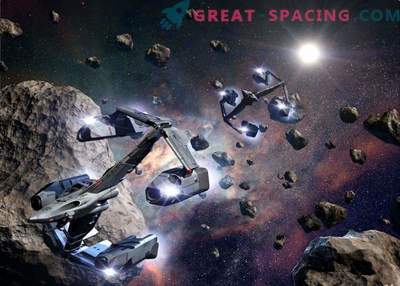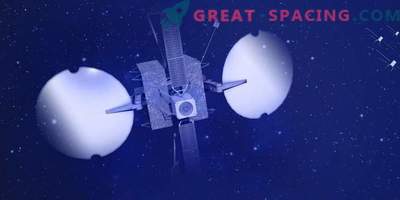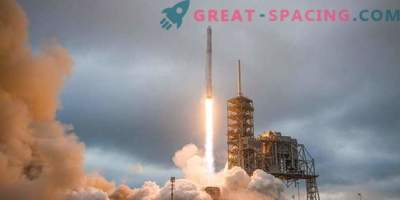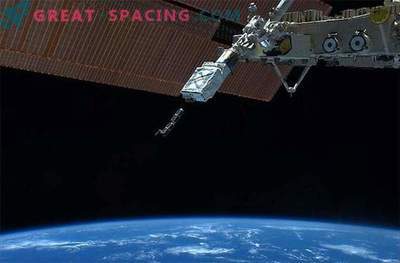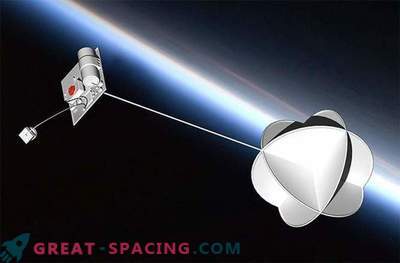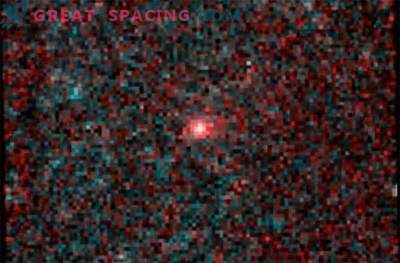
The concept of mining on an asteroid can provide fast delivery of satellites to a high orbit at a lower cost.
There are hundreds of satellites in geostationary orbit (that is, they rotate around the Earth at about the rate of its rotation). This is too far from the point in the space where people were able to sit at the moment. So the International Space Station is located about 250 miles above the surface Earth, and the geostationary orbit is about 10 times higher - 27000 miles.
How to deliver one of these satellites to such an extreme height? Standard methods include joining an additional rocket or a rocket stage, which pushes them to a high orbit. Or, a light electric propeller is used on the spacecraft, which slowly pushes the satellite to the desired location. Both options are expensive, especially given the time lost factor. After all, companies have to wait until the satellites take their place and earn.
Incredibly, an asteroid mining concept can be a solution to this problem. Joel Serkel, who heads the TransAstra mining company, and Phil Metzger, a planetary physicist at the Florida Space Institute, are in favor of creating a special spacecraft. It will fly there and back - from the Earth to the “warehouse” of rocket fuel. This is a kind of “space tug” that can not only ensure the delivery of satellites, but also extract valuable resources from asteroids.
Scientists and engineers recently gathered at the Asteroid Science Intersections conference with In-Space Mine Engineering (ASIME), which was held in Luxembourg, to discuss the best ways for potential industry on asteroids in the future and decide how to make this process more cost-effective for customers. One of the ideas was a spatial tug. This idea has been discussed for several decades. But the idea of combining it with the industry on the asteroid is relatively new. “We agree that this is a business case,” said Metzger. “You can recover capital investments and deliver a spacecraft, saving on costs and making a profit.”
While the network with the exact location of the spacecraft is still being developed, this idea seems very beneficial: in deep space, during long missions (several decades), the space industrial ship will head to the asteroid to extract water from it (along with other materials and precious metals). After completing the mission, the ship will return to the Earth-Moon system with water on board.
A warehouse with rocket fuel located somewhere near the Earth will receive this water. There it will be decomposed into hydrogen and oxygen, which are excellent rocket fuels. And therein lies the genius of the whole plan - space launch companies will no longer need to spend money on launching fuel into space. It will already be there, waiting in the warehouse, where any spacecraft can refuel.
Next comes the space tug. After launching the satellite, he “drags” him to the fuel depot to pick him up. The tug is then removed to a geostationary orbit, where it releases the satellite to complete its mission.
Serkel argues that with such an established system, we could significantly reduce the costs associated with the current method of sending satellites into high orbit and access to deep space. Now, if we want to get rid of the Earth's orbit, the only option is to start a mission with the maximum amount of everything (fuel, electronics, as well as astronauts). Having created a towing infrastructure, we, at least, will no longer have to worry about transferring huge amounts of fuel from the Earth. Now NASA is developing a large project - the Space Launch System (SLS), which is supposed to be able to serve as the best tool for research of the Solar System. If NASA’s plans for the 2030s are implemented, then it is these missiles that can be used for future Martian missions. The concept of SLS provides for “all in one”, where all the rockets, as well as fuel for the whole service life, are transported from the Earth. Obviously, this is an expensive event.
Serkel argues that NASA should pay attention to other methods, just as it does with the International Space Station. NASA has a commercial cargo delivery program in collaboration with SpaceX and Orbital Sciences, as well as developing commercial crew programs from SpaceX and Boeing.
“They can build capsules in the traditional way and train astronauts, but NASA’s missiles and transportation systems are too expensive,” said Serkel. He argues that the use of rockets such as SpaceX's Falcon 9 (intended for re-launch and safe descent to the ground) compared to public services will significantly save money in the field of space transportation systems. But this savings will increase even more, “if rocket fuel will be mined on asteroids,” he added.
It is difficult to determine the exact number of savings, as SpaceX is a private company and does not provide access to all figures. Earlier this year, Peter B. de Celding at Space News commented that SpaceX was not the first company trying to develop a technology for launching multiple rockets. The main engines of the reusable spacecraft were designed to operate up to 55 times. But the total cost was much higher than the designers had expected. “SpaceX President Gwynn Shotwell stated in March that the company expects up to 30% cost savings from reusing the first stage,” wrote de Selding, and then quoted the basic Falcon 9 prices for launching a satellite into a geostationary transition orbit. Naturally, the higher, the more expensive.
“If this was reflected in a 30% reduction in prices for customers,” added de Selding, “it will lower the advertised Falcon9 price to $ 42.8 million from today's $ 61.2 million.”
The industry in space itself is still in the early stages of development and there are already several companies interested in its development. Nevertheless, the industry is now mainly focused on the technology of developing and identifying asteroid candidates. So it will be several years or decades before the idea of a space tug comes to life. But it is interesting to think that the industrial infrastructure on the asteroid will be able to reduce the cost of launching satellites and deliver mankind to deep space.

